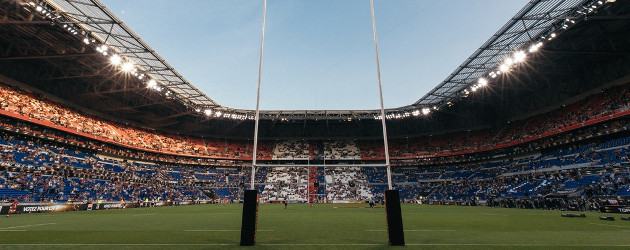Two Codes of Rugby – Rugby League & Rugby Union

If you are planning on doing some sports betting on rugby, the first thing you need to understand is the two codes. Ask any rugby fan what they’re betting on and the first thing they’ll answer is; league or union. There are two codes which at one time were united under the name of rugby football but now they are separate, and you need to know the difference, especially if you’re planning to bet real money. In this article we are going to explore the differences and the similarities between the two rugby codes. All the Ulster Rugby clubs and schools can be found on our site and this includes rugby union and rugby league. We feature all the latest Ulster & Irish Rugby news too.
Similarities Between Rugby League and Rugby Union

There are a number of similarities between these two codes and these are:
Aim of the Game: In both rugby union and rugby league, the aim is for both teams to win the game by scoring more points than their opponents. This is done through tries, conversions, drop goals, and penalty goals.
Scoring: In rugby union and rugby league a try is scored when a player touches the ball down beyond the defending team’s goal line. Teams are then allowed to try and get two more points by kicking what is called a conversion.
The Ball: The oval shaped ball is used in both rugby union and rugby league. The ball can be taken forwards in three ways: by running with it, by kicking it, or as the result of a set piece. The ball can also be passed in a sideways or backwards direction, but it cannot be passed forward.
Tackling: In both rugby union and rugby league the player carrying the ball is the only person who can be tackled. In both of the codes, play resumes with the ball being transferred to another member of the team but this can be in slightly different ways.
Differences Between Rugby Union and Rugby League

There are a number of differences between these two codes that you must be aware of if you are planning to do any sports betting. Most online gambling sites that offer sports wagers will have both codes listed with competitive odds. If you’re new to wagering online, we recommend looking for free bets and bonuses that let you enjoy everything and test things out risk free. There are numerous review sites that will help you find the sportsbook or online casino that is right for you and that delivers on their promises of top casino bonuses and promotions as well as a range of rugby markets for both codes. Many top online casinos incorporate sports betting too, so you get the best of both worlds in one place. Below you’ll find the main differences between the two codes.
Pitch: In rugby union the pitch is a maximum of 144m x 70m. In rugby league the maximum size of the pitch is 122m x 68m. Despite this, both league and union matches can be played on the same pitch and some league and union teams actually share stadiums.
Players: In rugby union, the teams consist of 15 players on the pitch. In rugby league games each team has just 13 players. The players are divided into forwards and backs in both codes.
Possession of the Ball: In rugby union a team can hold on to the ball for as long as they want and are able to. This is while the other team is attempting to take the ball from them. According to rugby league rules and laws, each team is only allowed to be tackled six times before they must hand over possession of the ball.
Tackling: Tackling is similar in both codes, but in rugby league players can use their legs to help them bring down players from the opposite team once they have both hands on them. Once a tackle has been made in rugby league a play the ball occurs. The play stops to allow the tackled player to roll the ball back with his foot to one of his teammates. Each team is allowed to do this up to six times per possession of the ball and then they have to kick the ball away toward the opposition if they haven’t scored. If the ball goes out of play after this kick, play restarts with a six player scrum, which is the restarting method following all most minor rule infringements. In rugby union when a player is tackled, they must release the ball too. It is however legal for any player to pick it up as long as they are on their feet and onside. This is why rugby union players compete for balls on the ground in what are called rucks and sometimes try to keep tackled players off the ground in what are often called mauls. If the ball is kicked out of play in rugby union the game is restarted with a lineout and not a scrum. Eight player scrums are used in rugby union to resolve minor rule infringements.
Scoring: Both codes have the same way of scoring but there are some differences in the points available. In rugby union a try is worth 5 points but in rugby union it is only worth 4 points. Conversions are worth two points for both union and league matches. In rugby league a drop goal is worth one point but it is worth three points in rugby union. A penalty goal is worth three points in rugby union and just one point in rugby league.
Demographic: Rugby union is seen as a more middle class game. Rugby league is more working class. This is true for rugby in the UK, Ireland, Australia, and New Zealand.
Now that you have a better understanding of the differences between rugby union and rugby league, you can make better decisions when it comes to placing wagers on matches. You’ll find all the details of the Ulster Cup Tournaments here on our site too so you can place your bets on the team you think will make it through.




